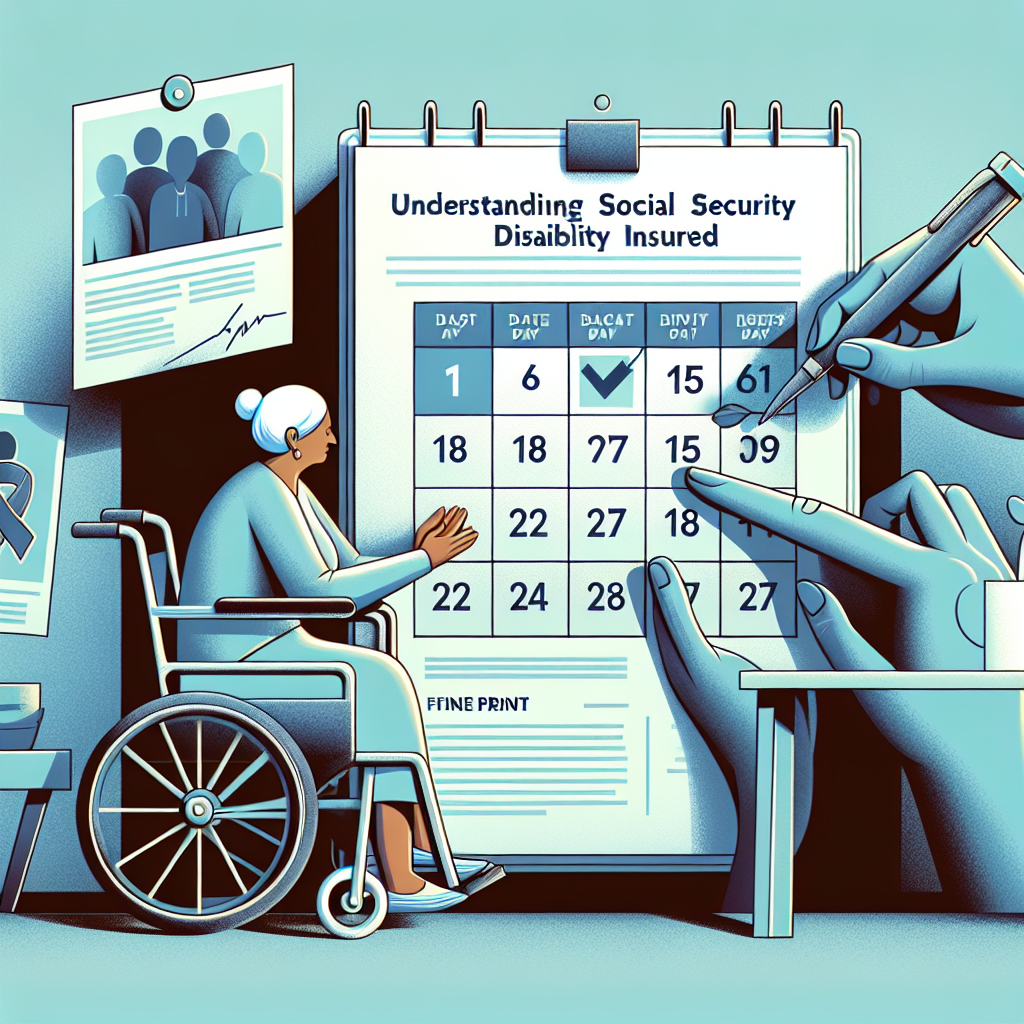Filed under Disability Insurance on
Understanding Social Security Disability Last Date Insured

Receiving Social Security Disability Insurance (SSDI) can be a vital source of income for those unable to work due to a medical condition. However, one essential aspect often misunderstood by applicants is the “Last Date Insured” (LDI). This critical component determines eligibility for many, yet remains shrouded in confusion. In this article, we will demystify the concept of the Social Security Disability Last Date Insured, guiding you through its importance, calculations, and implications for your benefits.
What is the Social Security Disability Last Date Insured?
When applying for SSDI, one of the foremost eligibility criteria is your employment history and corresponding coverage under Social Security. This coverage is influenced by your work credits, which are essentially a measure of your work history and the taxes you've paid into Social Security. The Last Date Insured for Disability Benefits is the deadline by which you must establish a disability to qualify for SSDI.
Your work history converts into quarters of coverage, and the Last Date Insured is the final date you are eligible to qualify based on these quarters. In simpler terms, it marks the date until which you must have been disabled to qualify for benefits. Missing this date can result in significant complications for SSDI eligibility.
Calculating Your Last Date Insured
The Social Security Administration (SSA) calculates your Last Date Insured based on the number of work credits earned throughout your career. Generally, you can earn up to four credits each year based on your income, with the specific earnings required to earn a credit changing annually due to inflation adjustments.
To determine your Last Date Insured for Disability, the SSA considers:
- The number of years you have worked.
- Your total number of accumulated work credits.
- Your age at the time of applying for SSDI.
Typically, you need 20 credits over the last 10 years, though this varies based on when the disability began. Younger workers may require fewer credits. If these conditions are met based on your work credits, the SSA sets your Social Security Disability Last Date Insured.
Importance of the Last Date Insured
Understanding your LDI is crucial as it directly impacts your potential eligibility for SSDI. Failing to establish a disability before this date means you might not receive the benefits, adding to personal and financial stress. Let’s explore how to prevent a missed Social Security Disability Last Date Insured:
Stay Updated on Your Work Credits
Regularly review your earnings record and ensure all your work is accurately recorded with the SSA, confirming you have the necessary work credits. This means annually checking your Social Security Statement online, making it a habit to clarify discrepancies promptly.
Document Medical Evidence
Maintain comprehensive medical records that support your disability claims. This documentation is crucial in proving your condition and establishing that your disability began before the Last Date Insured.
Apply Timely
If you suspect a disability impacts your ability to work, do not delay applying for SSDI. Initiating the application process early allows you to clarify your eligibility concerning your Social Security Disability Last Date Insured.
Common Misconceptions and Challenges
Misunderstanding the Social Security Disability Last Date Insured can lead to several complications in the SSDI application process. Let’s address some common misconceptions:
Misinterpretation of Insurance Terms
Some applicants confuse the Last Date Insured with private disability insurance terms, leading to false expectations. It is vital to comprehend that LDI pertains strictly to SSDI under Social Security.
Underestimating SSA’s Rigor
The SSA strictly adheres to eligibility criteria, and discrediting the importance of the Last Date Insured can adversely affect an application. Clarifying any uncertainties with a Social Security advisor ensures better preparedness.
Appealing Denials Due to Missed LDI
Initially overlooked, the LDI may result in denied claims. Yet, all hope is not lost. If denied based on a missed Last Date Insured, SS may consider reopening the case if you provide new and material evidence. Hence, an appeal process initiated promptly, demonstrating that the disability started before the LDI, might still render results.
Industry Insight: A Professional Perspective
Experts within the disability advocacy field often advocate for early preparation. “Securing your financial future by understanding the specifics of your LDI is more crucial than most anticipate,” says Laura Mitchell, a Social Security Advocate with over 20 years of experience. Laura emphasizes the importance of early application, maintaining up-to-date records, and seeking professional advice, especially for those nearing their Last Date Insured.
Current Trends in SSDI Applications
In recent years, there's been an observed increase in awareness and strategies employed by applicants regarding their Social Security Disability Last Date Insured. The integration of technology, especially online platforms, has improved accessibility to personal earnings records, thereby aiding applicants in tracking and understanding their work credits more precisely.
Moreover, social media and online forums have created communities where applicants share experiences and advice, fostering greater awareness of the intricacies associated with SSDI processes. The continued emphasis on digital engagement is reshaping how individuals approach their SSDI applications, emphasizing informed decisions bolstered by comprehensive understanding.
Conclusion
Deciphering your Social Security Disability Last Date Insured provides a pivotal advantage when applying for SSDI. Its significance cannot be overstated, as it potentially determines your eligibility for essential benefits—underlining the importance of awareness, timeliness, and meticulous record-keeping.
Empower yourself with the knowledge needed to navigate these complex waters successfully. By taking proactive steps, utilizing available resources, and seeking professional guidance when necessary, you affirm a stronger foundation for your disability benefit aspirations. The path to securing SSDI might seem daunting, but with a robust understanding of the Last Date Insured component, you chart your course toward a secure financial future.



